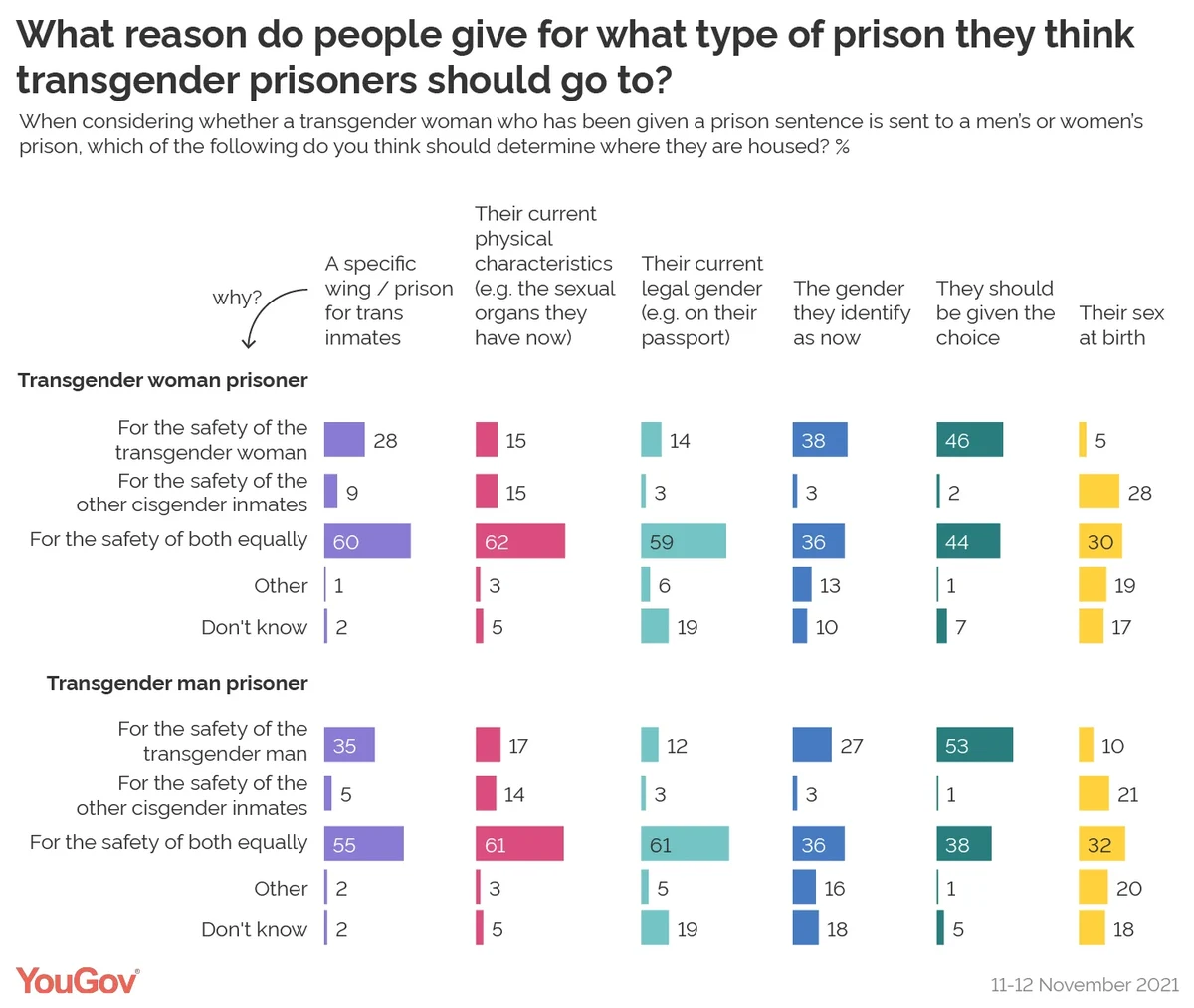The public are heavily divided
Following recent legal challenges, the High Court has ruled that it is lawful for women's prisons to house inmates who were born male but identify as female. This case has reopened the long-standing debate of where transgender inmates should be housed when they are sentenced to prison, with the House of Lords yesterday debating a move to have male-born offenders convicted of sexual offences housed only in men’s prisons.
The Transgender Case Board is the body of agencies that currently manages decisions on where offenders are placed. A transgender individual has the choice to appeal to go to the type of prison they prefer, but certain factors (i.e. their legal gender) can impact the result. Different approaches have also been tested, such as a specific wing for transgender women in HMP Downview.
There is no public consensus on what factors should determine where a transgender offender is housed, regardless of whether they are a transgender man or a woman. The most common answer was that there should be a specific wing or prison for transgender inmates, with a quarter (25%) of Britons choosing this. The next most frequent responses were that it should be based on the individual’s current physical characteristics (15-16%), their sex at birth (12-13%), or the gender they identify as now (11-12%). Another 9% say placement should be determined by a person’s legal gender.
There are key differences in opinion between genders, with women being more likely than men to say that it should be the gender they identity as, or that they should be given a choice. Men, on the other hand, are more likely than women to say it should be someone’s sex at birth.
Voters are also divided. Conservative voters are far more likely than Labour voters to say the decision should be made based on sex at birth, while Labour voters are more likely to say it should be how the offender chooses to identify.
We also asked Britons to say the reasons for their choice, with a focus on the safety aspects they considered. One-fifth (20-22%) said it was for the safety of the transgender individual, while 7-9% say put their reasons as for the safety of the other cisgender inmates. Two in five (42-43%) said they were concerned about both equally. There was no significant difference in results depending on whether the prisoner was a transgender man or transgender woman.
Conservative voters are more likely than their Labour counterparts to consider the safety of the other cisgender inmates, and Labour are more likely to consider the safety of the transgender offender. Similarly, 18-24 year olds are also more likely than over 65s to express concern for the safety of the transgender inmate specifically.
Looking at the reasons given broken down by the choice of how to decide where a transgender person should be housed reveals key differences in concern.
Among those who say that transgender prisoners should be housed in specific transgender wings/prison, by their current sexual organs, or by their current legal gender, the majority (55-62%) said their motivation was for the safety of both the transgender and cisgender inmates. Those thinking trans prisoners should have their own prisons/wings are less likely to say so out of concern for the safety of the transgender prisoner specifically when it is a transgender woman (28%, vs 35% when it is a transgender man) and are more likely to express safety concerns for cisgender (9% vs 5%) or both the trans and cisgender inmates equally (60% vs 55%).

By contrast, those who think inmates should be housed by their current self-identity, or that the prisoner should be given the choice, are split between saying it is for the safety of the transgender offender and all inmates equally. Those saying prisoners should be housed based on their current gender identity are slightly more likely to cite concern for the transgender inmate specifically when it is a transgender woman (38%) than when it is a transgender man (27%)
Those who say they should be assigned by their sex at birth are divided in the opposite direction, being more split between the safety of the cisgender inmates and the safety of the trans/cisgender inmates equally.








